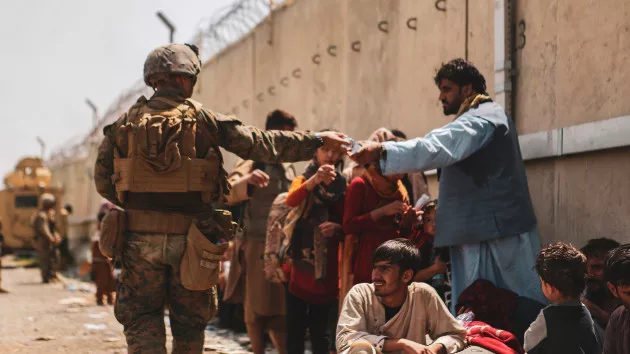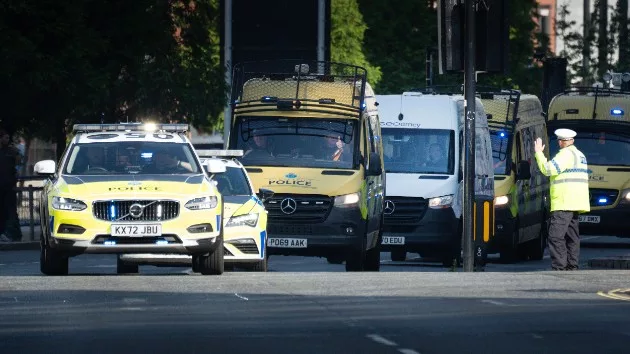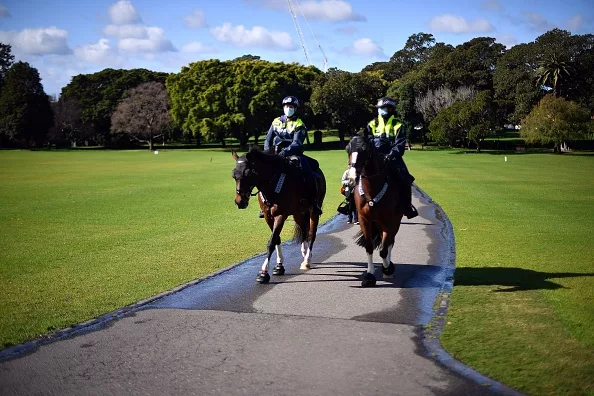
(WASHINGTON) — In a significant revelation, the U.S. military has for the first time publicly named the suicide bomber behind the catastrophic attack at Kabul’s Hamid Karzai International Airport during the chaotic final days of the American withdrawal from Afghanistan in 2021.
The identification was part of findings from a supplemental review ordered by U.S. Central Command to build on the military’s initial investigation by taking into account information and claims that have since surfaced. The review also found that members of a Marine scout sniper platoon at the airport who believed they had the bomber in their crosshairs were mistaken, and they would not have been able to prevent the attack.
In a recent briefing with reporters about the review, U.S. officials identified Abdul Rahman al-Logari as the terrorist responsible for killing 13 American service members and some 170 Afghans when on Aug. 26 he detonated a suicide vest laden with 20 pounds of military-grade explosives. The blast sent a mass of 5-millimeter ball bearings ripping through the densely-packed crowd near the airport’s Abbey Gate.
Al-Logari was a member of the Islamic State in Khorasan Province group, or ISIS-K, since 2016, according to a member of the review team from the Army.
At one point he was detained by coalition forces and held in custody, according to the review official. But al-Logari was one of the many prisoners released by the Taliban as its fighters swept to take control of the country from Afghan security forces — mostly without a fight — in the days just before the bombing, a second review team member said.
ISIS-K took credit for the carnage at Abbey Gate shortly after the attack, praising al-Logari for committing the atrocity.
U.S. intelligence compared a photo of the alleged bomber posted by ISIS-K and photos of al-Logari taken during his time in coalition custody, using facial analysis to determine it was the same person, according to the official.
The U.S. intelligence community went on to conclude al-Logari was indeed the suicide bomber, according to the first Army review team member.
“Over the last two years following the bombing, multiple intelligence agencies have also assessed the bomber identity as al-Logari,” the Army official said.
Though the bomber had been released from prison by the Taliban shorty before the attack, ISIS-K would have been able to carry out the bombing either way, the second Army official said.
“They had multiple bombers that were available,” the official said. “And this supports the conclusion that the attack at Abbey Gate was not preventable at the tactical level.”
GOP congress members have repeatedly raised the possibility the bombing could have been prevented in their attacks on the Biden administration’s handling of the withdrawal, largely based on testimony from former Marine Sgt. Tyler Vargas-Andrews, a member of one of the sniper teams providing overwatch near Abbey Gate.
In a March 2023 House Foreign Affairs Committee hearing, Vargas-Andrews claimed his team had a suspicious man matching a description of the suspected Abbey Gate suicide bomber in his sights before the deadly explosion on Aug. 26. He said they were denied permission to fire and prevent the blast, which claimed two of his own limbs.
The top U.S. general in the Middle East during the withdrawal, now-retired Gen. Kenneth “Frank” McKenzie, told lawmakers of the same committee last month that he was not aware of any intelligence alerts given to U.S. forces at the time matching the description given by Vargas-Andrews.
Florida Republican Rep. Cory Mills accused McKenzie of calling the Marine’s integrity into question, asking, “Do you want to face him and tell him that before him now?”
“I don’t want to face him and tell him that. I want to say that the battlefield is a very complex place. There were a lot of threats that were floating around out there that day. I honor his service. I regret he was injured,” McKenzie responded.
The supplemental review team likewise found that the man spotted by the sniper teams did not match descriptions given by any intelligence reports, adding that no specific individual was identified as the bomber by intelligence before the attack. The reviewers concluded the Marines were errantly going off of a description that conflated some pieces of an intelligence report on one man with elements of an informal “spot report” describing a different suspicious individual seen by other troops near the airport perimeter.
They honed in on a “bald man in black” who didn’t precisely match any actual be-on-the-lookout reports at the time, according to the review. Even authentic description reports of suspicious individuals were often vague enough to have matched any number of people in the crowd, according to the review.
Furthermore, the review team compared a photo taken by the sniper team of the man they believed could have been the bomber with photos of al-Logari, and determined with great confidence that they were not the same person.
The first Army review official said that al-Logari did not linger in the crowd, but detonated his vest just after arriving at Abbey Gate. This makes it very unlikely even the trained observers of the Marine sniper teams could have picked him out of the masses in time, especially since there was no description of the terrorist before the attack, according to the official.
“I must reiterate by saying that service members were vigilant in their duties,” the official said. “Yet, the intelligence available lacked targetable data to gain positive identification of the bomber prior to the attack. The suspicious person identified by a sniper team was not the Abbey Gate bomber.”
The military plans to release a redacted version of the full 1,200-page supplemental report to the public at an unspecified date, an Army official said.
Copyright © 2024, ABC Audio. All rights reserved.








